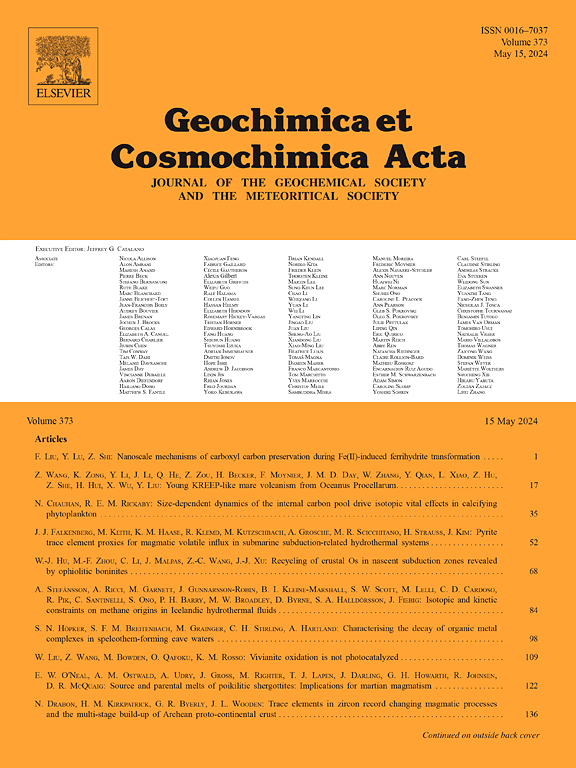Land-ocean connections in organic carbon cycling amid the Early Triassic (Smithian-Spathian) revealed through compound specific isotope analysis
IF 4.5
1区 地球科学
Q1 GEOCHEMISTRY & GEOPHYSICS
引用次数: 0
Abstract
Following the largest mass extinction of the Phanerozoic, the Early Triassic was characterized by a series of carbon cycle perturbations as revealed through multiple global carbon isotope excursions (CIEs). The mechanistic drivers behind these perturbations are a subject of debate due to limited records that differentiate terrestrial and marine carbon cycling processes. In this study, we focus on the Smithian-Spathian boundary, which is characterized by a global positive CIE approximately 2 million years after the onset of the carbon cycle perturbations. We present the results of biomarker molecular distributions (i.e., n-alkanes) and compound-specific carbon isotope analyses (δ13Calkane) for organic matter extracted from shales deposited at the Stensiöfjellet section in Spitsbergen, Norway. The measured middle Smithian δ13Calkane values are among the lowest in the Phanerozoic and potentially indicate high atmospheric pCO2 and a low δ13C value for CO2 as a result of the oxidation of organic carbon. Marine and terrestrial δ13Calkane records show parallel CIEs reflecting that both systems were equally affected by carbon cycle perturbations. Our data suggest the onset of the CIE started in the late middle Smithian, suggesting an earlier perturbation of the carbon cycle than previously recognized. Spathian δ13Calkane values remain elevated and diverge from bulk δ13C trends, reflecting an intrinsic shift in both the marine and terrestrial carbon cycle. Considered together, our compound-specific carbon isotope analyses foster useful insights into the multiple carbon cycle perturbations during an interval of extreme environmental conditions marked by continuous biological radiation and extinction pulses, which might even be analogous to imminent future anthropogenic changes in climate. This study further shows that compound specific carbon isotope analyses can potentially also disentangle deep-time carbon cycle perturbations.
求助全文
约1分钟内获得全文
求助全文
来源期刊

Geochimica et Cosmochimica Acta
地学-地球化学与地球物理
CiteScore
9.60
自引率
14.00%
发文量
437
审稿时长
6 months
期刊介绍:
Geochimica et Cosmochimica Acta publishes research papers in a wide range of subjects in terrestrial geochemistry, meteoritics, and planetary geochemistry. The scope of the journal includes:
1). Physical chemistry of gases, aqueous solutions, glasses, and crystalline solids
2). Igneous and metamorphic petrology
3). Chemical processes in the atmosphere, hydrosphere, biosphere, and lithosphere of the Earth
4). Organic geochemistry
5). Isotope geochemistry
6). Meteoritics and meteorite impacts
7). Lunar science; and
8). Planetary geochemistry.
 求助内容:
求助内容: 应助结果提醒方式:
应助结果提醒方式:


